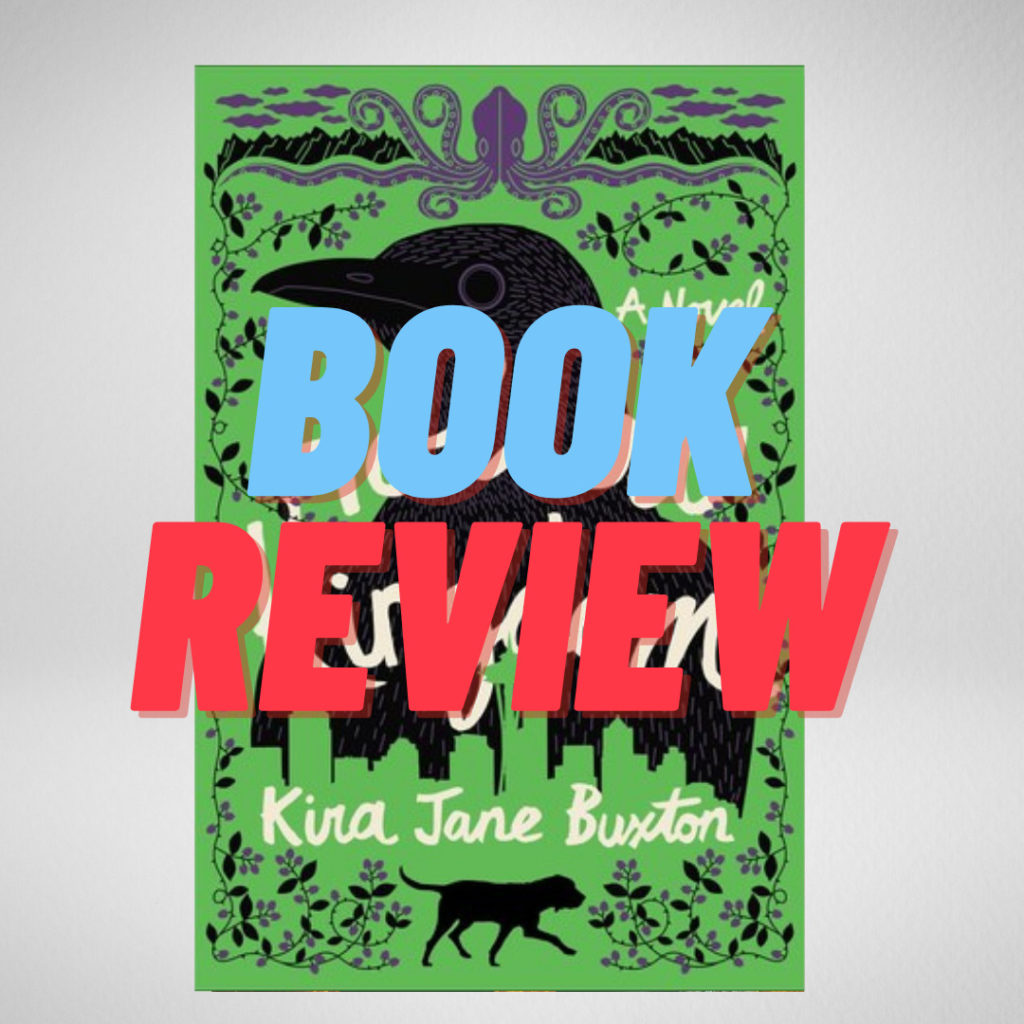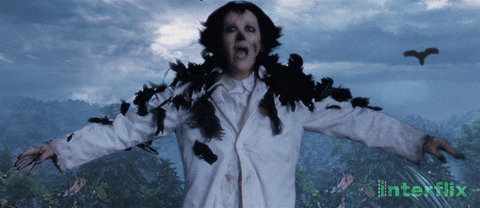Hollow Kingdom somehow slipped under my radar when it first came out in 2019 but I’m so glad I found it. I absolutely loved this book, and you can bet I’ll be reviewing the sequel in the new year!
S.T., a domesticated crow, is a bird of simple pleasures: hanging out with his owner Big Jim, trading insults with Seattle’s wild crows (those idiots), and enjoying the finest food humankind has to offer: Cheetos ®.
Then Big Jim’s eyeball falls out of his head, and S.T. starts to feel like something isn’t quite right. His most tried-and-true remedies–from beak-delivered beer to the slobbering affection of Big Jim’s loyal but dim-witted dog, Dennis–fail to cure Big Jim’s debilitating malady. S.T. is left with no choice but to abandon his old life and venture out into a wild and frightening new world with his trusty steed Dennis, where he discovers that the neighbors are devouring each other and the local wildlife is abuzz with rumors of dangerous new predators roaming Seattle. Humanity’s extinction has seemingly arrived, and the only one determined to save it is a foul-mouthed crow whose knowledge of the world around him comes from his TV-watching education.
From the first page, the book had me laughing. The bird main character, S.T., has this sublimely hilarious acerbic humour that is a mix of (intentionally, by the writer and unintentionally, by the bird) social critique and absurdity. The bird’s name is “Shit Turd”, which is so stupid it’s funny, and fits well with the bird’s guardian’s personality. But then there are clever jokes like, “moss, especially the Spanish kind, is a deadly conquistador” that made me smile or chuckle.
I really enjoyed how Big Jim fit some construction worker stereotypes, swearing a lot and being a bit rough around the edges, but not enough that it came off as mockery. My partner is in the trades and I can tell you that the stereotypes are there for a reason in some cases, but you also shouldn’t assume every tradesperson is some rude lout.
Also, the dog’s name is Dennis! My dog’s name is Denny (image below), and while Denny is not a hound (he’s a pug), everything Dennis did in the novel reminded me of Denny. Did I cry at one point? Yes. Was it a happy or sad cry? I won’t tell you.
The other characters are defined and interesting, for being a bunch of animals. That’s the real success of this novel – while you have to suspend your disbelief regarding the way the considerable gap between sentience and sapience has been accordioned – S.T. didn’t feel “too human.” We’re able to relate to him and understand his struggle while still remembering that he’s a bird.
The story, given we’re following a bunch of birds around, really drew me in. S.T.’s purpose, first to rescue Big Jim, then to rescue the domesticated animals trapped in houses, and his later goals, were compelling and each took up just enough of the story that it didn’t drag on in parts or feel too rushed. I liked how the animals used descriptions for things if they didn’t know the words, such as “The One Who Spits”. These things are explained later and there are some fun “Ahhh, I see” moments.
I also loved how we don’t really know why the world went down the toilet but we do find out eventually.
Along with the humour, the prose really worked for me. The moments of action and humour were balanced by phrases such as, “Tension clouded the air, the kind that follows eruptive violence. The kind that’s too heavy to drain itself.”
The novel proves that you can have a ridiculous premise in a genre that’s often hard to shake up (zombie apocalypse), but still include moments of poignancy, emotion, and narrative craft.
I also very much enjoyed the small chapters here and there focusing on other domesticated animals or various animals around the world, such as a cow in Scotland or a polar bear. And Genghis Cat is the best name for a cat I’ve ever heard.
For all you animal lovers (like me), while animals are harmed in the novel, none of it felt gratuitous or disgusting – while they are often in peril, and some die, it’s not disturbing.
In the end, the novel is as much a fun post-apocalyptic adventure and a witty social critique as it is an ode to pets.
For a longer review, check out our YouTube Channel!
Subscribe for not only bi-weekly book reviews, but the Post-Apocalyptic Minute, our Podcast, and other fun videos!






Leave a Reply